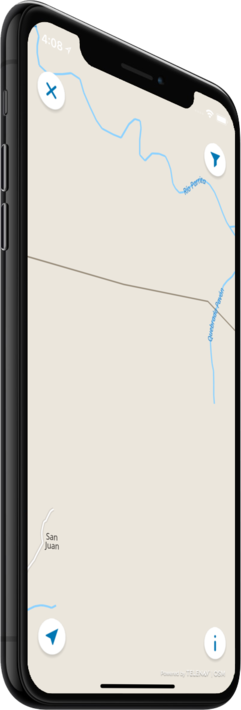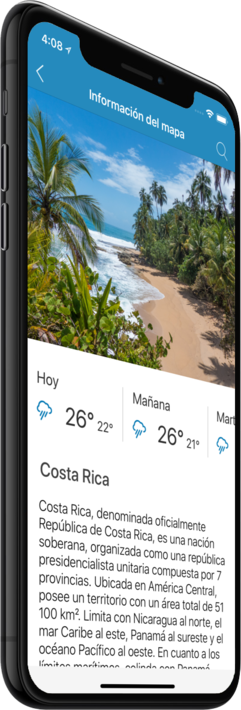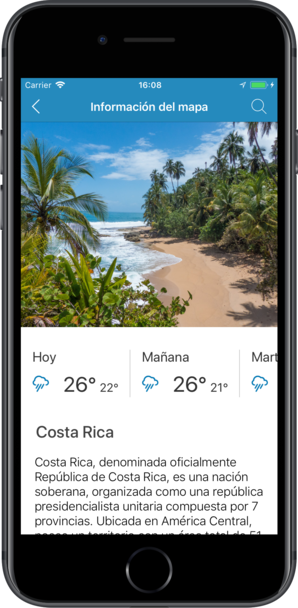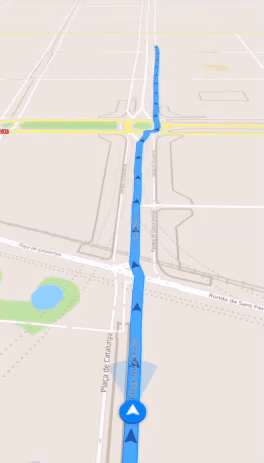Funcionalidades
¡Convierte tu viaje en una experiencia emocionante e inolvidable con el mapa móvil sin conexión Costa Rica!
PRINCIPALES DESTINOS
Nuestro mapa sin conexión te ofrece información sobre 24 destinos principales, con descripciones de alta calidad, fotos y comentarios escritos por viajeros reales.
CONTENIDO DE ALTA CALIDAD
Cada lugar que presentamos viene con una descripción, una foto y comentarios escritos por personas reales.
¡AHORRA DATOS MÓVILES!
¡Todas las funcionalidades de la aplicación funcionan sin conexión! Tan solo descarga nuestro mapa completamente autónomo antes de tu viaje ¡y ahorra tráfico móvil!
¡ENCUENTRA LOS PRINCIPALES DESTINOS CERCANOS!
Además de las ubicaciones destacadas, encontrarás decenas de miles de otros lugares útiles en nuestra guía (hoteles, restaurantes, cajeros, paradas de transporte público, puntos de interés, etc.).
NAVEGACIÓN SIN CONEXIÓN
¡Planifica sin conexión la mejor ruta para conducir, caminar o ir en bicicleta! Guarda tus ubicaciones para que siempre puedas encontrar tu camino de regreso fácilmente y nunca te pierdas. Guarda tus ubicaciones para que siempre puedas encontrar tu camino de regreso fácilmente y nunca te pierdas.
¡PRONÓSTICO DEL TIEMPO Y CONVERSIÓN DE MONEDA!
¡El último pronóstico del tiempo y una útil calculadora de tasa de conversión para más de 200 monedas diferentes!
Los mejores lugares de interés
Esta es una lista de algunos de los lugares de interés que puedes encontrar en nuestro mapa sin conexión.
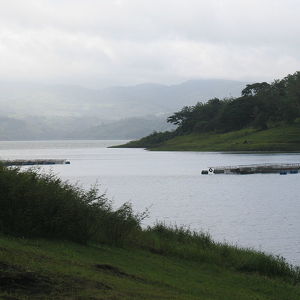
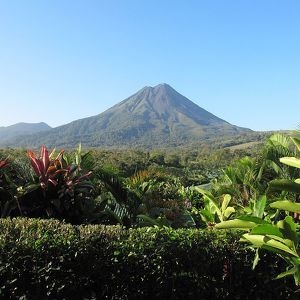
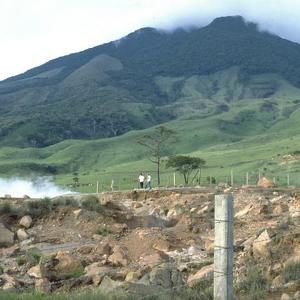
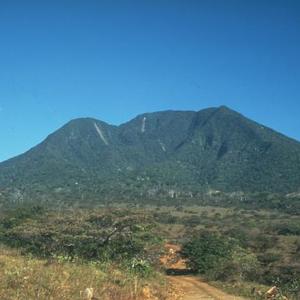
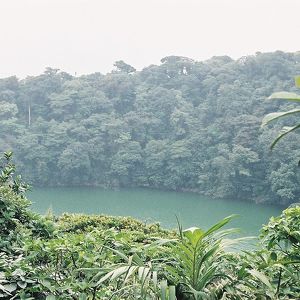
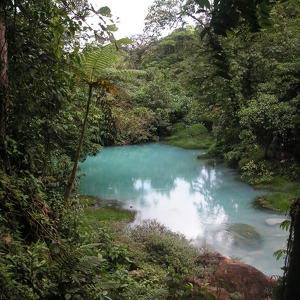
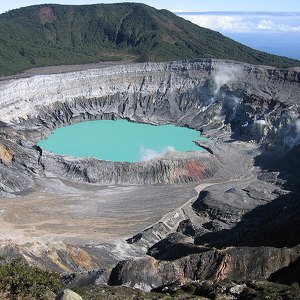

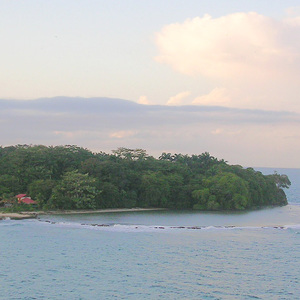
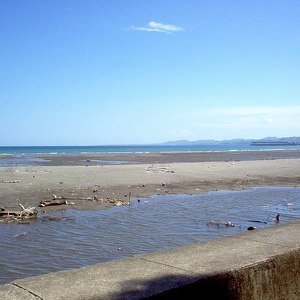
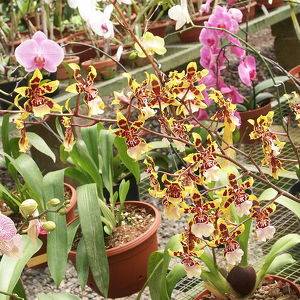
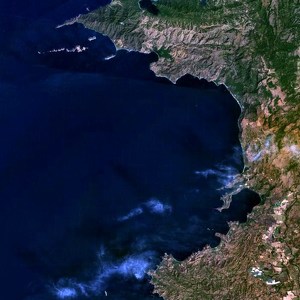
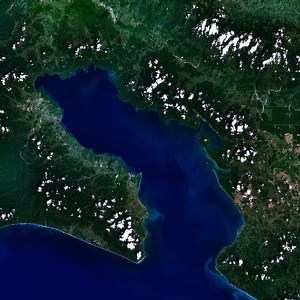
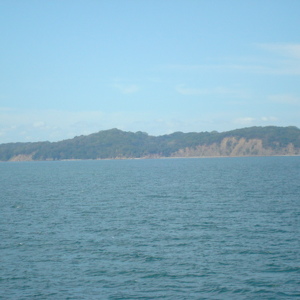
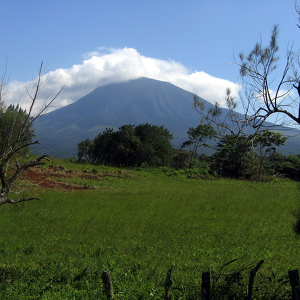
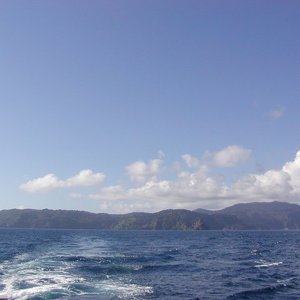
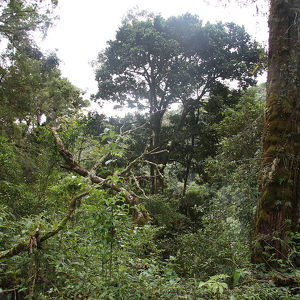
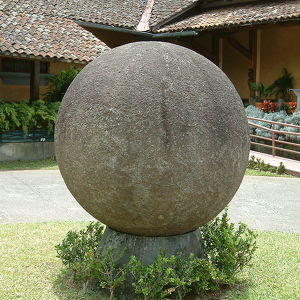

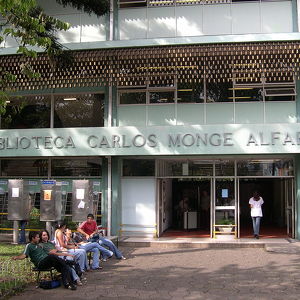
Lago Arenal
El lago Arenal es un embalse artificial situado en Costa Rica formado tras la construcción de una presa en 1979 aprovechando la existencia de un pequeño lago del mismo nombre. Se localiza cerca del volcán Arenal , Parque Nacional Volcan Tenorio y de...
Volcán Arenal
El volcán Arenal de Costa Rica está situado en el distrito de La Fortuna, cantón de San Carlos, en la provincia de Alajuela. Tiene una altura de 1.670 msnm. El volcán se encuentra dentro del Parque nacional Volcán Arenal. Inició su último y actual perí...
Volcán Miravalles
El Volcán Miravalles es un estratovolcán complejo, situado en Costa Rica 15 kilómetros al norte de la ciudad de Bagaces, en la Zona Protectora Miravalles. Posee una altitud de 2.028 msnm, es la cumbre más alta de la Cordillera Volcánica de Guanacaste. ...
Volcán Orosí
El volcán Orosí es un estratovolcán localizado en Costa Rica, ubicado en la cordillera de Guanacaste, a 30 km de la ciudad de La Cruz, provincia de Guanacaste y cerca de la frontera norte con Nicaragua. Alcanza los 1440 msnm. Junto con el volcán Cacao...
Volcán Chato
El Volcán Cerro Chato es un estratovolcán ubicado en Costa Rica. Se encuentra localizado en La Fortuna de San Carlos, al lado sureste del Volcán Arenal, en la provincia de Alajuela en el noroeste del país. Posee una altura de 1.140 msnm y se encuentra ...
Parque nacional Volcán Tenorio
El parque nacional Volcán Tenorio es un área de conservación natural ubicada en Costa Rica. Se encuentra localizado en la Cordillera de Guanacaste, entre las provincias de Alajuela y Guanacaste, al noroeste del país, entre los cantones de Upala, Guatus...
Parque nacional Volcán Poás
El Parque nacional Volcán Poás, es un parque nacional de Costa Rica que cubre un área de aproximadamente 65 km² (16.000 acres). Fundado el 25 de enero de 1971, se encuentra ubicado en la provincia de Alajuela, a 45 km al noroeste de San José, capital d...
Cerro Chirripó
El cerro Chirripó es el nombre del punto más alto de Costa Rica, forma parte del Parque Nacional Chirripó. El macizo se ubica en la zona limítrofe entre los cantones de Pérez Zeledón (San José), Turrialba (Cartago), Limón y Talamanca (Limón). En su ...
Isla Uvita
La Isla Uvita se encuentra ubicada a tres kilómetros al este del actual puerto de la ciudad de Limón, en el Caribe de Costa Rica. La isla era llamada Quiribrí por los habitantes indígenas de la localidad de Cariari, habitantes precolombinos de la zona....
Península de Burica
La península de Burica es una pequeña península de forma alargada y ligeramente triangular, compartida por Costa Rica y Panamá. Junto con las penínsulas panameñas de Las Palmas y de Azuero, son las más meridionales de América Central. La península s...
Jardín Botánico Lankester
El Jardín Botánico Lankester es un jardín botánico de unas 10,7 ha de extensión con una colección de orquídeas de las más importantes del mundo. Este jardín botánico que forma parte de la Universidad de Costa Rica, se ubica en el cantón de Paraíso, ...
Golfo de Papagayo
El golfo de Papagayo es un golfo de Costa Rica situado en la costa noroccidental del país, en aguas del océano Pacífico. Sus costas pertenecen a la provincia de Guanacaste. El golfo de Papagayo y su litoral es el centro de un proyecto turístico impo...
Golfo Dulce
El golfo Dulce es un pequeño golfo y fiordo tropical de Costa Rica situado en la costa meridional del país, en aguas del océano Pacífico. Administrativamente está dividido entre los cantones de Osa y Golfito. El entrante comienza en el lado del océa...
Isla San Lucas
La Isla San Lucas es una isla ubicada frente a la costa del Pacífico de Costa Rica, en el Golfo de Nicoya. Pertenece al distrito primero del cantón central de Puntarenas. Está ubicada aproximadamente a 8 kilómetros de Puntarenas, la ciudad más cerca...
Isla del Coco
La Isla del Coco es una isla situada en el océano Pacífico perteneciente a la República de Costa Rica, que la declaró Parque Nacional. A pesar de ser una isla deshabitada en ella se encuentran guardaparques, biólogos, investigadores y marinos las 24 ho...
Parque internacional La Amistad
El Parque Internacional La Amistad (también llamado PILA), es un parque transfronterizo, fue creado por los gobiernos de Costa Rica (PILA-Costa Rica) y Panamá (PILA-Panamá) al reunir la Reserva de la cordillera de Talamanca y el Parque Nacional La Amis...
Esferas de piedra de Costa Rica
Las esferas de piedra de Costa Rica son un grupo de más de quinientas petroesferas precolombinas ubicadas principalmente en el sur de Costa Rica, en la llanura aluvial del delta del río Diquís (confluencia del río Sierpe y el río Grande de Térraba), en...
Parque nacional Corcovado
El Parque Nacional Corcovado se encuentra en la Península de Osa al suroeste de Costa Rica (9° Norte, 83° Oeste), y es parte del Área de Conservación Osa. Fue creado el 24 de octubre de 1975, y comprende un área de 45757 ha terrestres y 5375 ha marinas...
Universidad de Costa Rica
La Universidad de Costa Rica (también llamada por sus siglas, UCR) es una de las cinco universidades públicas de la República de Costa Rica y una de las más prestigiosas y reconocidas de América Latina.2 Su campus principal, la Ciudad Universitaria Ro...
Contador

24
DESTINOS PRINCIPALES

581
LUGARES DE INTERÉS

5929
HOTELES

5125
CAFETERÍAS Y RESTAURANTES
Contáctanos
Puedes ponerte en contacto con nosotros mediante este formulario.
 |
 |
 |

